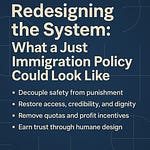🧭 Overview
What should public transit be—and who should control it?
This post uses the THX Frameworks to evaluate the essential role of public transit in equity, opportunity, and daily well-being. It explores where public investment creates the greatest value, and when private involvement helps—or hurts—the people who rely on it most.
This is not just a story of buses and trains. It’s a case for dignity, connection, and shared infrastructure.
✍️ Key Topics Covered
Why public transit is more than transportation—it’s a platform for social and economic mobility
How private involvement has worked (and failed) in cities around the world
A breakdown of transit’s value across all 12 Utilities, PERMAH, and emotional trust triggers
What micro-moments reveal about transit’s impact on daily life
A case for thoughtful public-first, private-smart transit policy
🧠 Who This Is For
Urban planners, transportation policymakers, and civic leaders
Advocates for equity, accessibility, and climate resilience
Anyone who’s ridden a late bus, missed a shift, or watched a system break down
Those trying to rebuild public trust in public services
🌍 Global Examples Explored
NYC’s MTA: bloated but essential
DC Metro: uneven service and bailout debates
Bogotá’s BRT: revolutionary, but now overburdened
Copenhagen’s metro: integrated, reliable, and dignified
💬 Reflection Prompt
When was the last time a transit system helped you show up—for work, family, or something that mattered?
What happens when those systems disappear for the people who need them most?













Share this post